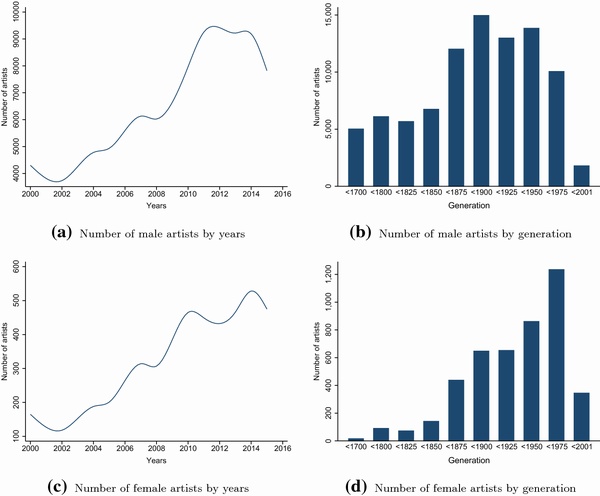Implicit bias claims had reached their apex. We're all prejudiced, implicit bias proponents claim, it is only a matter of degree. Or was it only wishful thinking by social scientists? Peer review of the methodology couldn't conclude that sexism was rampant in symphony choices at all. Yet it got media attention by science journalists who often don't or can't understand what they are reading. Peer review in the original publication is no defense, since its flaws are well-known and gender studies proponents peer reviewing gender studies claims have implicit bias of their own. Appearing in a low impact journal is also not the problem. When PNAS was not running claims about weedkillers used on golf courses turning frogs "gay", they were lending their brand to bizarre claims that female-named hurricanes cause more damage because men are sexist.
Yet a female hurricane name is at least obvious. Have you ever liked a piece of art less when you found out the painting was done by a woman?
I have not, art is art and I can't tell you who painted one of my favorite pieces despite it being in my living room for a decade. Yet some believe there is implicit bias in art purchases and that discourages women from entering the field at all. A new paper finds that over 96 percent of all artworks sold at auctions worldwide between 2000 and 2017 were by male artists. Conclusion: auctions prevent women from entering the high-end art market.

Evolution of number of male and female artists. The year 2017 is omitted in Figures a and c as they only used the first four months of this year. Overall, there were 6,171 male and 167 female artists in 2017. Due to missing data on the year of birth, not all artists could not be allocated to a generation. Figures b and d omit these artists. Overall, 21,748 male and 1,113 female artists could not be allocated to a generation. Credit: 10.1007/s10824-020-09403-2
Let's unpack that.
I was not dissuaded from becoming an elite baseball player because I am not Latino, I was dissuaded because I found out at a young age I am not and could never be an elite baseball player. The marketplace showed me, and the demographics of other players made no difference. No scouts were offering me a contract despite my love of the game and desire to play.
You sell artwork if you are good at art just like you did not even get an audition for a symphony unless you are already a great musician. You cannot practice your way to being a great musician, only a functional one.
The real confounder in the paper: women receive a higher average price for their artwork.
How can it be sexism if more women are getting more money for their work than men? It may just be a statistical wobble - that over the last few years at the $1 million and up level, art sold by men since the year 2000 was 18 percent higher than those by women.
The problem with statistics is easy to see; you don't have to be great at art to try and sell art, you don't even have to be great at art to get a degree in art. Schools are happy to take your money. There is no deliverable. So art students may be equally gender balanced but claiming that the highest art auctions should also be cannot follow.
If women have higher average sales, but men dominate the very top, then it means men also dominate the bottom. So the argument could be made that for a man to succeed, he has to be better than a woman with the same skill level.
It may also mean female artists should be paid less if fairness is the goal.
As comedian/actor Rob Schneider put it: “I, Rob Schneider, will no longer take projects that do not pay women equally. Even if that means lowering the woman’s salary substantially.”
Citation: Bocart, F.Y.R.P., Gertsberg, M.&Pownall, R.A.J. An empirical analysis of price differences for male and female artists in the global art market. J Cult Econ (2021). https://doi.org/10.1007/s10824-020-09403-2




Comments